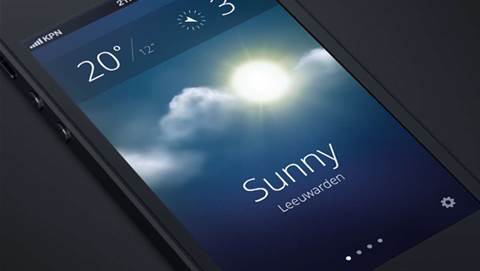South Korean scientists have devised a new type of transparent fingerprint sensor that can be placed on smartphone and other device screens, and which can also sense tactile pressure and skin temperature.

Researchers from the Ulsan National Institute of Science and Technology developed a flexible, capacitive fingerprint sensor that they say has excellent optoelectronic properties, high resolution, and outstanding reliability against bending.
They did this by building a mesh made out of ultra-long silver nanofibres and nanowires, which can be driven at high, 1MHz frequency.
This unconventional approach let the scientists build a sensor that is not only 89.05 percent transparent, but also provides 318 capacitors per inch (CPI) resolution - higher than the FBI's 250 CPI requirement for extracting fingerprint patterns.
On top of that, the new sensor technology offers capacitance variation that's around 17 times better than that of conventional indium tin oxide (ITO) electrodes, the researchers said in a paper published in the science journal Nature.
Skin temperature sensing capabilities can be used to detect the difference between real human fingers and forged artifical prints, for additional security.
Currently, fingerprint sensors such as Apple's Touch ID and the equivalent scanners on Samsung Galaxy and Note smartphones are separate units, placed on the bezel below the screen or at the back of the devices.
Being able to integrate the fingerprint sensor into smartphone screens would simplify device designs, and has been the holy grail of biometric authentication development for many years now.
Several approaches have been tried to build a successful fingerprint sensor that could be commercialised and made in large volumes.
This includes optical sensors that use frustrated refraction over a glass prism, with the finger being lit by a light-emitting diode.
Thermal detectors that scan the surface of the finger - measuring the heat transferred to the print - have also been tried, along with ultrasound that uses high-frequency sound waves to penetrate the epidermal layer of the skin.
Human/device interface accessory maker Synaptics released its FS9100 optical fingerprint sensor in 2016, but it has yet to be integrated into smartphones from a major vendor.










 iTnews Executive Retreat - Security Leaders Edition
iTnews Executive Retreat - Security Leaders Edition












_(1).jpg&h=140&w=231&c=1&s=0)



